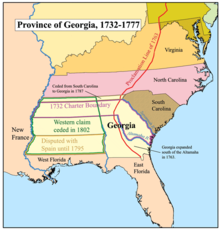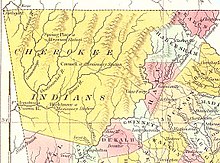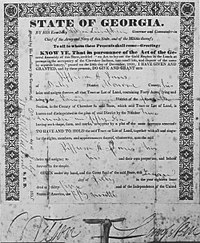It has come to my attention that there is a serious lack of LEADERSHIP in
Washington D.C.
Dear House of Israel,
LEARN to Love.
Deuteronomy 11:18-21
King James Version (KJV)
18 Therefore shall ye lay up these my words in your heart and in your soul, and bind them for a sign upon your hand, that they may be as frontlets between your eyes.
19 And ye shall teach them your children, speaking of them when thou sittest in thine house, and when thou walkest by the way, when thou liest down, and when thou risest up.
20 And thou shalt write them upon the door posts of thine house, and upon thy gates:
21 That your days may be multiplied, and the days of your children, IN THE LAND which the Lord sware unto your fathers to give them, as the days of heaven upon the earth. (The Promise of the HOPE of The HOUSE of Israel).
19 And ye shall teach them your children, speaking of them when thou sittest in thine house, and when thou walkest by the way, when thou liest down, and when thou risest up.
20 And thou shalt write them upon the door posts of thine house, and upon thy gates:
21 That your days may be multiplied, and the days of your children, IN THE LAND which the Lord sware unto your fathers to give them, as the days of heaven upon the earth. (The Promise of the HOPE of The HOUSE of Israel).
THE
“CITY-STATE” of ROME, GEORGIA
Although officially founded in 1834, the history of Rome, Georgia began much earlier with the settlement of Native Americans and exploration by Europeans. Its early inhabitants were DIVERSE, leading to both innovation and strife. Due to its LOCATION at the junction of three rivers, Rome was “initially” a crossroads for TRADE AND TRANSPORTATION. Today, Rome is the largest city in Northwest, Georgia, and is a REGIONAL CENTER of healthcare, education, and manufacturing.
Although officially founded in 1834, the history of Rome, Georgia began much earlier with the settlement of Native Americans and exploration by Europeans. Its early inhabitants were DIVERSE, leading to both innovation and strife. Due to its LOCATION at the junction of three rivers, Rome was “initially” a crossroads for TRADE AND TRANSPORTATION. Today, Rome is the largest city in Northwest, Georgia, and is a REGIONAL CENTER of healthcare, education, and manufacturing.
Life in the area of Rome before the Spaniard expeditions in the 16th century is largely unknown, due to the native inhabitants' lack of written records.
There is some debate over whether Hernando de Soto was the first Spanish conquistador to encounter Native Americans in the area now known as Rome, but it is usually agreed that he passed through the region with his expedition in 1540.[2] In 1560, Tristán de Luna sent a detachment of 140 soldiers and two Dominican friars north along de Soto's route, and it is this group that established true relations with the Coosa chiefdom as they assisted the Coosa in a raid against the rebellious province of Napochín, in what is now known as Tennessee.[3] Exposed to unfamiliar European diseases, within 20 years these Mound Builders were gone, replaced by the Creek.
The Muscogee (or Muskogee), also known as the Creek or Creeks, are a Native American people traditionally from the southeastern United States.[3] Mvskoke is their name in traditional spelling. The modern Muscogee live primarily in Oklahoma, Alabama, Georgia, and Florida. Their language, Mvskoke, is a member of the Muscogee branch of the Muscogean language family.
The Muscogee were descendants of the Mississippian culture peoples, who built earthwork mounds at their regional chiefdoms located throughout the Mississippi River valley and its tributaries. The historian Walter Williams and others believe the early Spanish explorersencountered ancestors of the Muscogee when they visited Mississippian-culture chiefdoms in the Southeast in the mid-16th century.[4]
The Muscogee were the first Native Americans to be "civilized" under George Washington's civilization plan. In the 19th century, the Muscogee were known as one of the "Five Civilized Tribes", because they had integrated numerous cultural and technological practices of their more recent European American neighbors. Influenced by their prophetic interpretations of the 1811 comet and earthquake, the Upper Towns of the Muscogee, supported by the Shawnee leader Tecumseh, began to resist European-American encroachment. Internal divisions with the Lower Towns led to the Red Stick War (Creek War, 1813–1814); begun as a civil war within the Muscogee Nation, it enmeshed them in the War of 1812 against the United States.
During the Indian Removal of 1830, most of the Muscogee Nation moved to Indian Territory. The Muscogee Creek Nation based in Oklahoma is FEDERALLY recognized.
The Abihka tribe of Creek in the area of Rome later became part of the Upper Creek, and merged with other tribes to become the Ulibahalis, who later migrated westerward into Alabama in the general region ofGadsden,[5][6] and were replaced by the Cherokee in the mid-18th century.
There was a Cherokee village named Chatuga on or near the site of Rome that had been established during the migration of the Cherokee westward during the Chickamauga Wars. The Cherokee also referred to the area that would become Rome as "Head of Coosa", and it eventually became home to several Cherokee leaders, including Chiefs Major Ridge and John Ross.[7] Ridge's home here was known for years as Chieftains House, and is now Chieftains Museum
In the 18th century, a high demand in Europe for American deer skins had led to a brisk trade between Indian hunters and white traders, and as a result, a few white traders and some settlers (primarily from the British Colonies of Georgia and Carolina) were accepted by the Head of Coosa Cherokee. These were later joined bymissionaries, and then more settlers. After the American War of Independence, most new settlers came from the area of the U.S. state of Georgia East of the Proclamation Line of 1763.

In 1802, the United States and Georgia executed the Compact of 1802, in which Georgia sold its claimed Western lands to the United States and the United States agreed to ignore Cherokee land titles and remove all Cherokee from Georgia. The commitment to evict the Cherokee was not immediately enforced, and Chiefs John Ross and Major Ridge led efforts to stop their removal, including several Federal lawsuits.
During the 1813 Creek Civil War, most Cherokee took the side of the Upper Creek Indians against the Red Stick Creek Indians. Before they moved to Head of Coosa, Chief Ridge commanded a company of Cherokee warriors as a unit of the Tennessee militia, with Chief Ross as adjutant. This unit was under the overall command of Andrew Jackson, and supported the Upper Creek.
In 1829, GOLD was discovered near Dahlonega, Georgia, starting the FIRST gold rush in the United States. The Indian Removal Act of 1830, which fulfilled the Compact of 1802, was a direct result of this, and Georgia's General Assembly passed legislation in 1831 that "claimed" (stole) all Cherokee land in Northwest Georgia. This entire territory was called Cherokee County, Ga until additional legislation in 1832 divided the territory into the nine counties that exist today.
"City" founding period
In 1834, the city of Rome was founded by Col. Daniel R. Mitchell, Col. Zacharia Hargrove, Maj. Philip Hemphill, Col. William Smith, and Mr. John Lumpkin (nephew of Governor Lumpkin), who determined the name for the new city by holding a drawing. Each put his choice in a hat, with Col. Mitchell submitting the name of Rome in reference to the area's hills and rivers. Mitchell's submission was selected, and the Georgia Legislature made Rome an official city in 1835. The County Seat was subsequently moved east from the village of Livingston to Rome.[10]
With the entire area still occupied primarily by Cherokee, the city served the agrarian needs of the new cotton-based economy that had begun to replace deer-skin trading after the invention of the cotton gin. The first steamboat navigated the Coosa River to Rome in 1836, reducing the time-to-market for the cotton trade and speeding travel between Rome and the Gulf Coast.
By 1838, the Cherokee had run out of legal options, and were the last of the major tribes to be forcibly moved to the Indian Territories (in modern-day Oklahoma) on the Trail of Tears. After the removal of the Cherokee, their homes and businesses were taken over by whites, and the Roman economy continued to grow. In 1849, an 18-mile rail spur to the Western and Atlantic Railroad in Kingston was completed roughly along the current path of Georgia Highway 293, significantly improving transportation to the east.
Land Specs
Land lots were surveyed in five different sizes based on the perceived quality of the land. In 1805, land lots were 202.5 acres (0.8 km2) and 490 acres (2.0 km2). In 1807, land lots were 202.5 acres (0.8 km2). In 1820, land lots were 250 acres (1.0 km2) and 490 acres (2.0 km2). In 1821, land lots were 202.5 acres (0.8 km2). In the 1832 Land Lottery area, land lots were 160 acres (0.6 km2), while in the 1832 Gold Lottery area, land lots were 40 acres (0.2 km2).
[edit]History of system
Prior to 1803, Georgia distributed land via a headright system. Though designed to prohibit corruption, the system actually encouraged it. During early administration, the government abused this system and created what today is generally known as the Yazoo land scandal.[2] The much-abused "headright" system resulted in the adoption of the lottery system in May 1803, under governorJohn Milledge. The first lottery occurred in 1805. For each person subscribing to a lottery, a ticket was placed in the barrel or wheel. Since each lottery was over-subscribed, tickets were added to compensate for the over-subscription.
In October 1831, Georgia voters went to the polls to vote between Governor George Gilmer who wished to reserve the Cherokee land, which contained several gold mines, for the State of Georgia, in order to pay for government projects and reduce taxes, and Wilson Lumpkin, who strongly supported giving away the lands (in what would become the State's last three land lotteries).
[edit]Resistance
In an effort to keep their lands, certain Cherokees (and other interested parties)—including John Ross, Samuel Worcester and Major Ridge—took their fight against the State of Georgia to the United States Supreme Court. There were two major cases heard by the Court during the years of 1831 through 1832: Cherokee Nation v. Georgia and Worcester v. Georgia. Though the Cherokee Nation actually won the court battles, both U.S. President Andrew Jackson and the State of Georgia chose instead to ignore the Supreme Court ruling. Georgia continued its surveying and division of the Cherokee lands through the final "1832 Land and Gold Lotteries". President Jackson utilized the U.S. Army, forcing the "removal of the Cherokees.[3]
[edit]Speculation
Land speculation in the LOTTERIES were common, many lots were sold sight-unseen by the winners for other lots or for gold. Real estate agents, individual citizens and even unscrupulous lottery officials attempted to secure promising gold belt lots or valuable Cherokee plantation lots. During the 1832 Lottery alone, some 85,000 people competed for 18,309 land lots to be given away, and at least 133,000 people competed for 35,000 gold belt lots to be given away.
During the 27 years that the State of Georgia used the lottery system, the rules and the methods of the system remained virtually unchanged. Lottery FEES depended on the winning ticket and the size of the lot won, but in general, they only covered the cost of running the lottery.At that time, The State did not DIRECTLY "profit" from allocating these lands. Fractional lots were sold in each of the lotteries, and some lands, especially those near major rivers, were exempt from the lottery. These were distributed by the State at PUBLIC AUCTIONS.
Lotteries
- 1805 Land Lottery — This encompassed Creek Indian lands just west of the Oconee River ceded to the state in 1802 and a small strip of land in the southeast section of the state.
- 1807 Land Lottery — Included additional Creek lands.
- 1820 Land Lottery — After the Creek War (1814), President Jackson demanded from the Creeks an immense area of land which would become the southern third of the entire state of Georgia. A second section of land in northeast Georgia was included. This other, smaller section defined the eastern end of the Cherokee Nation for 12 years.
- 1821 Land Lottery — Further Creek cessions which included the future site of Atlanta.
- 1827 Land Lottery — Signaled the end of the Creek Indians in Georgia.
- 1832 Land Lottery — This lottery, along with the 1832 Gold Lottery, gave the Cherokee Nation to Georgia settlers. Sparked the "Trail of Tears."
- 1832 Gold Lottery — By the time of the gold lottery the Georgia Gold Rush was already beginning to wind down. The state did not guarantee that gold existed on the lots given away.
- 1833 Fractions Lottery — The State of Georgia held one final land lottery in December, 1833, to distribute fractions from the Cherokee territory and other remaining lots not drawn in previous lotteries.
reference: Wikipedia The FREE Encyclopedia
Also: Settling Cherokee Georgia: Land Grab, Gold Rush, or Both see:http://www.helsinki.fi/iehc2006/papers3/Wishart.pdf







No comments:
Post a Comment